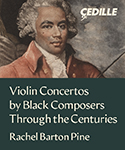The Scottish composer/pianist Ronald Stevenson (born 1928) is best known for his large-scale Passacaglia on DSCH, based on the four-note D E-flat C B-natural pattern that spells out Shostakovich’s initials. However, he has written hundreds of other original works and transcriptions for piano, many of which figure in this three-disc set. Stevenson’s keyboard aesthetic owes much to Busoni (and, to a lesser extant, Grainger) in that he often uses other composers as a jumping off point, and that musical ideas tend to take precedence over pianistic effect, notwithstanding the fact that the keyboard layout is unquestionably idiomatic. Idiomatic, yes, but not always clever, never really scintillating, and anything but effortless.
For example, the fugue based on the Chopin Fourth Ballade’s opening theme gets bogged down in increasingly thick contrapuntal filler as the fugue subject grows louder and more petulant in fighting its way to be heard. Stevenson’s pedantic single-hand arrangements of two Chopin waltzes in A-flat major sound rather notey, thick, and humorless when combined, in contrast to the wit and textural transparency that Marc-André Hamelin achieved when combining the three A minor Chopin Etudes into a delicious triple whammy. The canonic caprice based on Die Fledermaus displays more contrapuntal rigor than waltzing charm, while a series of pieces that mix, match, and graft sections of different Chopin Preludes on top of each other sound forced.
By shoe-horning Busoni’s two-piano version of Mozart’s Fantasia for a Musical Clock K. 608 into one for a single pair of hands, the already overwrought transcription becomes even more heavy and labored. These words also apply to the thickly upholstered Bull and Purcell transcriptions, Ysaÿe’s first two solo violin sonatas recast for piano, and Le festin d’Alkan, a pianistically ingenious but harmonically gray three-movement work lasting nearly 30 minutes. On the other hand, a group of song transcriptions make use of sparser textures, wider interval leaps, and a lyrical sensibility that is entirely Stevenson’s own. His dark and poignant treatment of the Scottish ballad “Lord Randal” also is a case in point.
The dry sonics lack resonant bloom and sell pianist Murray McLachlan’s hard-working and masterful fingers short, which is a pity when you consider his steadfast and thoroughly committed championship of Stevenson’s output. Indeed, the pianist’s advocacy extends itself into his lovingly detailed booklet notes. No doubt that piano aficionados with a penchant for the arcane may respond sympathetically to Stevenson’s style. To my ears, his music is fascinating yet problematic.
































